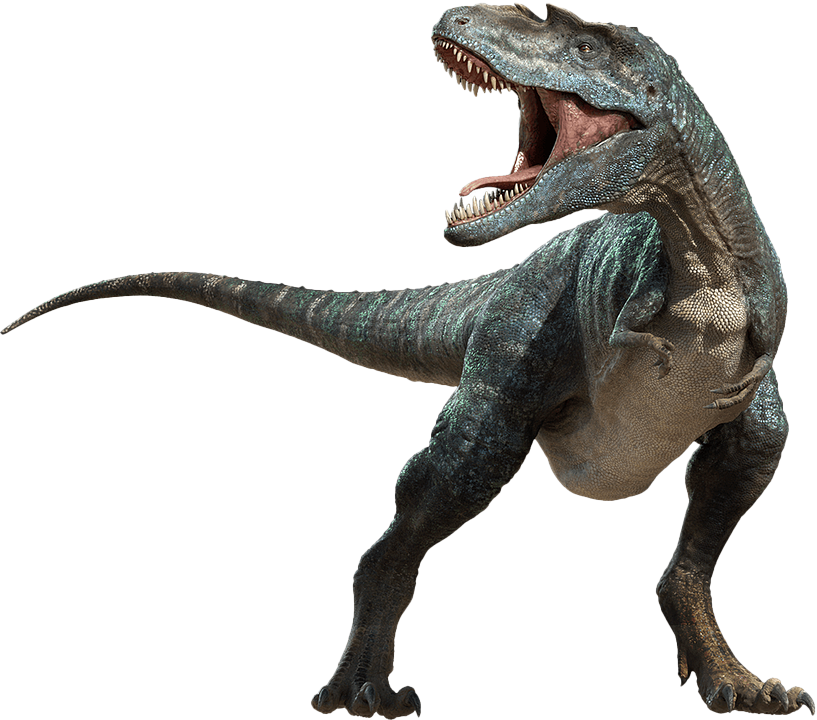Dinosaurs: Amazing Creatures from the Past!
Dinosaurs lived on Earth for a really long time! They roamed the planet from 252 to 66 million years ago, during a time called the Mesozoic Era. Back then, all the continents were connected!
The mesozoic era was split into three periods:
Triassic Period (252-201 million years ago)
The first dinosaurs appeared.
Jurassic Period (201-145 million years ago)
Dinosaurs grew larger and more types appeared.
Cretaceous Period (145 to 66 million years ago)
The Cretaceous Period had the largest dinosaurs of all!
Are Birds Dinosaurs?
Yes! Today’s birds are actually dinosaurs because they share many of the same bones and features, like three toes. Even a chicken is considered a living dinosaur! During the Mesozoic Era, other reptiles like alligators lived too. They shared a common ancestor with dinosaurs but are not dinosaurs themselves.
How large Were Dinosaurs?
Some dinosaurs were as long as half a football field! But, most dinosaurs were human-sized or even smaller. Who Studies Dinosaurs? People who study dinosaurs are called Paleontologists.
Who Studies Dinosaurs?
People who study dinosaurs are called Paleontologists. If they use microscopes to study tiny fossils, they are called Micro-paleontologists.
What does “Paleo” mean?
The word “Paleo-” is a prefix that means “prehistoric” or “ancient.” You might see it in words like “Paleontology” (the study of ancient life, like dinosaurs) or “Paleoanthropology” (the study of ancient humans).
Click the boxes below for information on the dinosaurs!
Curious about ancient Humans as well? Click here!

The King of Dinosaurs
Tyrannosaurus Rex, often called T-Rex, was one of the largest land predators ever known. This massive theropod dinosaur lived during the late Cretaceous period, approximately 68-66 million years ago in what is now western North America.
With powerful jaws containing up to 60 teeth, some as long as 8 inches, T-Rex was perfectly designed for crushing bone and tearing flesh. Despite its fearsome reputation, recent studies suggest it may have been both a predator and scavenger.
The Gentle Giant
Brachiosaurus was one of the tallest dinosaurs that ever lived, reaching heights of up to 40 feet with its incredibly long neck and front legs. This massive sauropod lived during the late Jurassic period and was perfectly adapted for browsing on tall coniferous trees that other dinosaurs couldn't reach.
Unlike most dinosaurs, Brachiosaurus had longer front legs than back legs, giving it a distinctive upright posture. Its massive size and peaceful herbivorous nature made it a gentle giant of the ancient world, living in herds and migrating across vast landscapes in search of food.
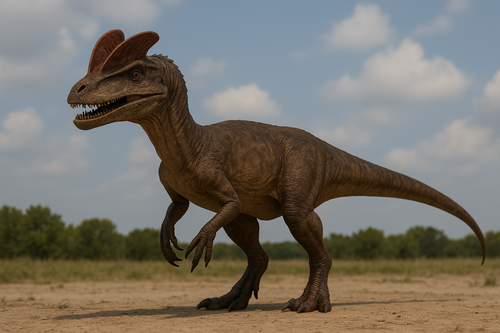
The Double-Crested Hunter
Dilophosaurus was a medium-sized theropod dinosaur that lived during the Early Jurassic period. Its most distinctive feature was the pair of thin, bony crests on top of its skull, which gave it its name meaning "two-crested lizard." These crests were likely used for display purposes to attract mates or establish dominance.
Despite its Hollywood portrayal, Dilophosaurus was actually quite large and didn't have a neck frill or spit venom. It was a capable predator with sharp teeth and powerful jaws, hunting prey across the ancient floodplains of what is now North America.

The Dragon King of Hogwarts
Dracorex hogwartsia, meaning "dragon king of Hogwarts," is one of the most uniquely named dinosaurs ever discovered. Its skull featured dramatic horns and spikes that gave it a dragon-like appearance, inspiring its magical name. The species name was chosen by young visitors to the Children's Museum of Indianapolis where the fossil was displayed.
Interestingly, many paleontologists now believe Dracorex may not be a separate species at all, but rather a juvenile Pachycephalosaurus. The spiky skull would have flattened into the characteristic dome shape as the dinosaur matured. This herbivore roamed North America during the Late Cretaceous period.

The Armored Tank
Ankylosaurus, meaning "fused lizard," was one of the most heavily armored dinosaurs to ever walk the Earth. Its entire body was covered in thick, bony plates called osteoderms, and rows of spikes ran along its sides. The most iconic feature was its massive tail club, which could deliver devastating blows to predators like Tyrannosaurus rex.
This low-slung herbivore was built like a living fortress, with even its eyelids protected by bony shutters. Ankylosaurus lived during the Late Cretaceous period in North America, using its wide, toothless beak to crop low-growing vegetation. Its armor was so effective that it had few natural predators despite its slow movement.
The Three-Horned Giant
Triceratops is one of the most recognizable dinosaurs, famous for its distinctive three-horned face and large bony frill. This herbivorous dinosaur lived during the late Cretaceous period and was one of the last dinosaur species to exist before the mass extinction event.
The impressive frill and horns served multiple purposes: protection from predators like T-Rex, display for mating rituals, and possibly thermoregulation. Triceratops traveled in herds across the ancient landscapes of North America.
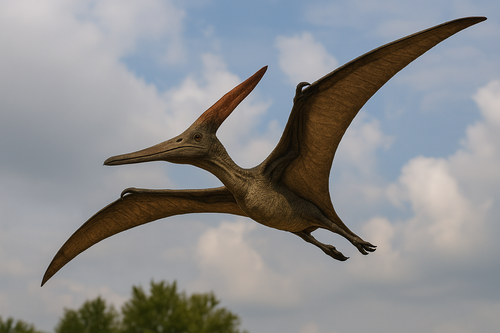
The Winged Reptile
Pteranodon was not actually a dinosaur, but a flying reptile called a pterosaur that soared through the skies of the late Cretaceous period. With its massive 23-foot wingspan and distinctive backward-pointing crest, it was one of the largest flying creatures ever to exist.
These magnificent creatures were expert gliders that spent most of their time soaring over ancient seas, diving to catch fish with their long, toothless beaks. The large crest on their heads likely served as a rudder for flight control and display for mating purposes.
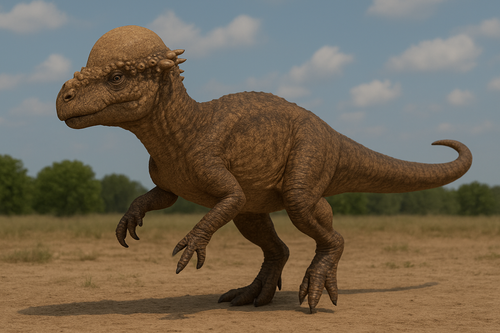
The Dome-Headed Dinosaur
Pachycephalosaurus was a unique dinosaur known for its distinctive dome-shaped skull, which could be up to 10 inches thick. This remarkable feature earned it the nickname "thick-headed lizard" and made it one of the most recognizable dinosaurs of the Late Cretaceous period.
Scientists believe these dinosaurs may have used their thick skulls for head-butting contests, similar to modern-day rams, to establish dominance or compete for mates. Despite their intimidating appearance, Pachycephalosaurus were herbivores that walked on two legs and had relatively small arms.

The Thumb-Spiked Pioneer
Iguanodon, meaning "iguana tooth," was one of the first dinosaurs ever discovered and named in 1825. This gentle giant was famous for its distinctive conical thumb spikes, which scientists initially thought were horns on its nose! These spikes likely served as defensive weapons against predators or tools for breaking into seeds and fruits.
Iguanodon was a versatile herbivore that could walk on both two legs and four legs, making it one of the earliest known facultative bipeds. It roamed the forests of Europe and North America during the Early Cretaceous period, using its specialized teeth to grind tough plant material.

The Crested Trumpeter
Parasaurolophus, meaning "near crested lizard," was one of the most distinctive dinosaurs thanks to its spectacular backward-curved head crest. This hollow crest could reach up to 6 feet in length and was connected to the nasal passages, likely used to produce loud, resonating calls for communication across vast distances. Scientists believe these trumpeting sounds helped the herd stay connected and warned of approaching predators.
This herbivorous hadrosaur roamed the forests and floodplains of North America during the Late Cretaceous period. Parasaurolophus could move on both two and four legs, walking on all fours while feeding on low vegetation and rising on its hind legs to run from danger. Its specialized teeth formed grinding batteries perfect for processing tough plant material.

The Plated Lizard
Stegosaurus is instantly recognizable by its distinctive double row of large, triangular plates running along its back and its formidable spiked tail, known as a "thagomizer." This heavily armored herbivore lived during the late Jurassic period and roamed the western United States.
The iconic back plates likely served multiple functions: thermoregulation, display for species recognition, and possibly defense. The four sharp spikes on its tail were definitely defensive weapons, capable of delivering devastating blows to predators like Allosaurus.

The Swift Predator
Velociraptor was a small but deadly predator that lived during the late Cretaceous period. Despite being only about the size of a large dog, it was one of the most intelligent and feared hunters of its time, equipped with razor-sharp claws and lightning-fast reflexes.
These cunning carnivores hunted in packs and were covered in feathers, making them appear more like deadly birds than traditional reptiles. Their most fearsome weapon was a sickle-shaped claw on each foot, which they used to slash at prey with devastating precision.

The Sail-Backed Predator
Spinosaurus was one of the largest carnivorous dinosaurs ever discovered, even bigger than T-Rex. Its most distinctive feature was the enormous sail-like structure on its back, formed by elongated spines that could reach up to 5.4 feet tall. This sail may have been used for display, temperature regulation, or to store fat.
Recent discoveries suggest Spinosaurus was semi-aquatic, spending much of its time in water hunting fish with its crocodile-like jaws. Its paddle-like tail and dense bones made it an excellent swimmer, making it the first known dinosaur adapted for life in the water.
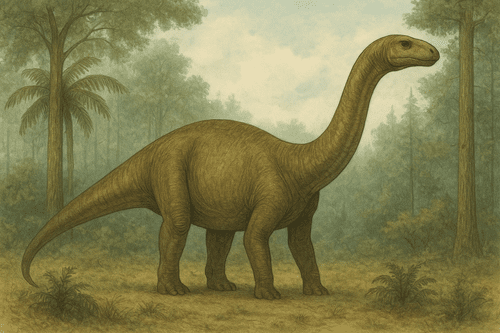
The Thunder Lizard
Brontosaurus, meaning "thunder lizard," is one of the most iconic dinosaurs in popular culture. This massive sauropod featured a long neck, whip-like tail, and four sturdy legs that supported its enormous body. For many years, scientists believed Brontosaurus was actually the same as Apatosaurus, but recent studies have confirmed it as a distinct genus.
This gentle giant was a herbivore that used its long neck to reach vegetation other dinosaurs couldn't access. Brontosaurus lived during the Late Jurassic period in what is now North America, browsing on ferns, conifers, and other prehistoric plants. Its name comes from the ground-shaking footsteps it would have made while walking.
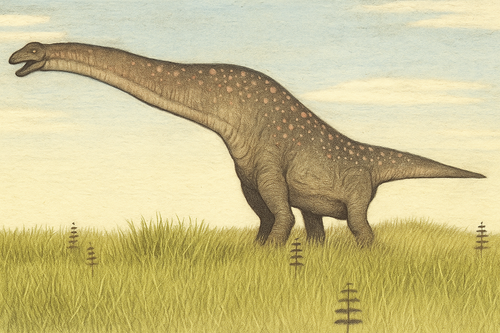
The Colossal Giant
Titanosaurs were the largest land animals to ever walk the Earth, with some species reaching truly mind-boggling proportions. These massive sauropods had long necks for reaching high vegetation, pillar-like legs to support their enormous weight, and whip-like tails. Their name means "titanic lizard," perfectly capturing their extraordinary size that dwarfed nearly all other creatures.
These gentle herbivores dominated the landscapes of the Late Cretaceous period across multiple continents. Titanosaurs traveled in herds, leaving behind massive trackways that paleontologists still discover today. Despite their size, they likely had relatively small heads and simple peg-like teeth, swallowing vegetation whole and using gastroliths (stomach stones) to help grind plant matter in their digestive systems.
